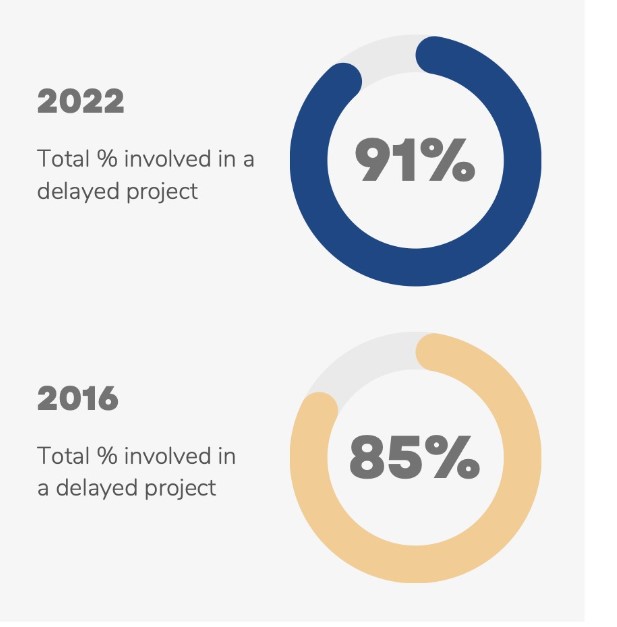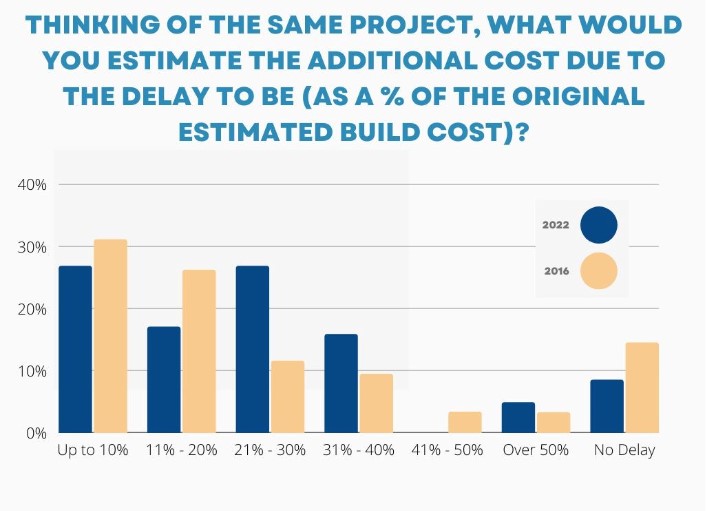Outsourcing skilled draftsmen offshore is a powerful strategy to combat project delays and budget overruns in the construction industry. By leveraging offshore talent, businesses can gain access to highly-skilled professionals who create accurate, detailed blueprints at a fraction of the cost of hiring locally. This approach not only ensures projects stay on track but also allows companies to reinvest significant cost savings into other critical areas of the business. Ultimately, hiring an offshore draftsman is a cost-effective solution that helps turn blueprints into reality, saving both time and money.
A study by HKA, a leading global risk mitigation consultancy, showed $91 billion in excess costs across 1,800 projects. The study also showed cumulative delays of 876 years, pointing to the same culprit: “inaccurate, incomplete, and late designs.”
I. Who Are Draftsmen and What Do They Do?

Draftsmen translate ideas and concepts into the detailed drawings and blueprints that form the foundation of any construction, manufacturing, or engineering project. Their work ensures that every dimension, material, and structural detail is accurate and follows safety standards.
- Translating Concepts into Reality: They are responsible for creating precise technical drawings that guide engineers, architects, and contractors.
- Ensuring Compliance: Draftsmen ensure that all designs adhere to local building codes, safety regulations, and industry standards.
- Providing Critical Details: They account for every dimension, material specification, and structural detail, ensuring a seamless transition from a design on paper to a real-world structure.
What Are the Different Types of Drafting Specialties?
The drafting field is highly specialized, with each type of draftsman focusing on a specific area of design.
- Architectural Draftsmen: Create blueprints, floor plans, and building layouts for residential and commercial buildings.
- Mechanical Draftsmen: Focus on diagrams for parts, machines, and mechanical components.
- Civil Draftsmen: Create plans for infrastructure projects like roads, bridges, and public works.
- Electronics & Electrical Draftsmen: Design diagrams for electrical circuits, components, and power systems within buildings.
- Aeronautical Draftsmen: Work on detailed designs for aircraft and spacecraft, from wings to internal systems.
- Pipeline Draftsmen: Specialize in the layout and design of piping systems for various industries, including oil and gas.
- Marine Draftsmen: Focus on technical drawings for boats, ships, and other watercraft.
- Landscape Draftsmen: Create detailed site plans for outdoor spaces like parks and gardens.
What Skills and Training Do Draftsmen Have?
A skilled draftsman has a blend of formal education, technical proficiency, and creative problem-solving abilities.
- Educational Background: Most have a degree or have completed specialized programs in drafting, design, engineering, or related fields.
- Technical Proficiency: They are trained to use industry-standard software such as AutoCAD, Revit, or SolidWorks to create complex models.
- Problem-Solving: Beyond technical skills, a successful draftsman must also be able to creatively resolve design issues before a project reaches the construction phase.
II. The Challenges Businesses Face Without Skilled Draftsmen

Without skilled draftsmen, businesses will find themselves facing a range of issues that can impact the success of any project. Whether it’s a construction firm working on a new building or a manufacturing company developing prototypes, the absence of a solid draftsman will lead to serious problems.
-
Costly Delays
Delays in drafting can significantly disrupt project timelines, as every phase of construction or production relies on detailed technical drawings. When draftsmen fall behind, the entire project stalls because the construction or manufacturing teams lack the instructions they need to begin or proceed.
For example, if floor plans or machinery layouts aren’t ready in time, it leads to scheduling conflicts, unproductive workdays, and labor costs that add up quickly. In highly competitive markets, even a short delay can mean falling behind competitors or missing critical market entry points, especially for startups that may lack the budget flexibility to handle extended project timelines.
A U.K. survey of construction professionals compared the delays in construction projects for 2016 and 2022. The survey showed that the percentage of projects that suffered delays has increased from 85% to 91%.

Source: www.cornerstoneprojects.co.uk -
Increased Costs
Inaccurate or incomplete drawings often result in costly rework. If errors or missing details in the technical drawings are only noticed once construction has started, the financial impact can be severe.
Revisions may involve demolishing completed work, reordering materials, and deploying additional labor, all of which stretch the project budget.
The financial strain of correcting these errors often affects small businesses and startups more acutely, as their budgets are typically less adaptable to unexpected expenses. Moreover, frequent changes and corrections can erode trust with clients, who may view these issues as a sign of unprofessionalism or poor planning.
The same survey mentioned above also showed that the delays are becoming more costly:

Source: www.cornerstoneprojects.co.uk -
Poor Quality
Technical drawings act as the quality backbone of any project, whether it’s a residential building, a highway, or a complex machine. Poorly executed drafts can result in compromised quality, as builders may interpret missing or unclear details incorrectly.
For instance, an inaccurate drawing might lead to the misplacement of critical elements like support beams, HVAC units, or safety barriers, weakening the overall integrity of the project. This can lead to a domino effect where, as quality issues mount, clients lose confidence in the project’s durability and safety, potentially impacting future business and reputation.
-
Compliance Issues
Draftsmen must not only deliver accurate designs but also ensure these meet industry regulations and safety standards.
Non-compliance with regulatory requirements can bring projects to a halt or even lead to costly legal action.
For example, in a building project, a draftsman’s oversight regarding local fire codes or accessibility standards could result in project shutdowns until corrections are made.
Beyond potential delays, failure to adhere to regulations can lead to fines, liability claims, or forced project revisions. A skilled draftsman helps companies avoid these issues by ensuring all drawings align with both local and international standards.
Startups and small businesses feel these strains more acutely, the financial repercussions of such setbacks can be devastating.
In competitive markets, even a short delay or a regulatory snag doesn’t just mean falling behind competitors. It can lead to the abandonment of the project.
III. Problem: Hiring Draftsmen is Expensive
Hiring skilled draftsmen domestically can be cost-prohibitive, especially for smaller businesses and startups.
With U.S. salaries for draftsmen ranging from $43,000 to $75,000 per year according to current market data, the financial commitment quickly adds up—often beyond reach for companies with limited budgets.
For startups with sporadic drafting needs, hiring a full-time, in-house draftsman is seldom practical. Outsourcing has become the logical alternative, yet even U.S.-based freelancers come with high hourly rates, which still strain resources.
To truly reduce costs while maintaining quality, companies are increasingly turning to offshore outsourcing.
By tapping into global talent pools, businesses can access the same technical expertise at a fraction of domestic rates, allowing them to stay within budget without compromising on professional standards.
IV. Solution: Outsource Draftsmen Offshore
Offshore outsourcing is commonly used for services like IT support, customer service, and drafting work.
Why Outsource Draftsmen Offshore?
Outsourcing drafting services offshore offers a powerful combination of cost savings, access to specialized expertise, and operational flexibility. This approach allows businesses to reduce overhead by leveraging global talent pools with lower labor costs.
What Are the Key Benefits of Offshore Drafting?
- Cost-Effectiveness: Hiring draftsmen domestically can be expensive due to high salaries and overhead. By outsourcing offshore, companies can significantly reduce labor expenses. According to ShoreAgents, a firm can save up to 78% on costs by hiring a skilled offshore CAD specialist for around $14,300 USD annually, compared to the over $65,000 USD cost of a local employee.
- Access to a Broader Skill Pool: Finding a local draftsman with a specific specialty (e.g., architectural, civil, or marine drafting) can be challenging. The U.S. Bureau of Labor Statistics reported that there were only about 204,500 drafters nationwide in 2023. Outsourcing provides access to a much larger, diverse talent pool of professionals with specialized skills from around the world.
- Flexibility and Scalability: Offshore outsourcing allows businesses to adjust their workforce to meet fluctuating project demands. You can easily scale your team up for a peak period without the long-term commitment of hiring full-time staff, which is particularly beneficial for small firms or businesses with seasonal projects.
V. How Offshore Draftsmen Save Your Business Time and Money
In addition to cost savings from their lower rates, outsourced draftsmen save businesses more money through the efficiency and quality of their work. A highly-skilled, draftsman will ensure that projects flow smoothly to completion.
Here’s a closer look at how quality offshore draftsmen can impact any business:
-
Lower Project Costs
Tapping into a wider pool of talent, not being limited to what is available to your company locally, generally means being exposed to a higher level of expertise and experience.
Countries like the Philippines, with its strong educational system and robust design, engineering, and drafting traditions—have become the preferred source for high-quality but affordable draftsmen, even rivaling those in the West.
Accessing a global talent pool often means higher expertise for less, reducing costly rework and project delays.
-
Faster Turnaround Times
Offshore draftsmen are often able to deliver high-quality drafts faster than in-house teams.
Many offshore providers have teams that work around the clock, leveraging time zone differences to ensure that your projects keep moving even after your office closes.
Offshore teams often work around the clock, allowing U.S.-based firms to receive completed drafts overnight.
For example, an architectural firm based in the U.S. might send out design specifications at the end of their business day and receive fully completed drafts from an offshore partner by the next morning. This reduces downtime between project phases, accelerates timelines, and helps your business meet tight deadlines.
-
Focus on Core Competencies
Outsourcing allows firms to dedicate internal resources to primary tasks, like client management or strategic planning.
Drafting may be an essential part of many projects, but for most companies, it isn’t their area of expertise. By outsourcing to skilled offshore professionals, your team can focus on core operations like product development, customer service, and strategy—areas that directly drive revenue.
An engineering firm may have brilliant structural engineers, but if those engineers are spending a significant portion of their time drafting, it becomes a loss in some other area. By outsourcing drafting work, the firm can redirect its internal talent toward other high-value activities that drive growth.
The cumulative impact of these advantages—faster turnaround times, reduced errors, and the ability to focus on core competencies—translates into significant cost savings for businesses.
For small to medium-sized businesses or startups, where every dollar counts, these savings can be a game-changer.
By partnering with skilled offshore talent, businesses can achieve high-quality results at a fraction of the cost.
VI. Best Practices for Collaborating with Offshore Draftsmen
What Are the Best Practices for Collaborating with Offshore Draftsmen?
Collaborating with offshore draftsmen requires a strategic approach focused on clear communication, cultural understanding, and relationship building. By following a set of best practices, you can ensure a successful and productive partnership.
1. Choosing the Right Partner
Selecting the right offshore partner is the first and most critical step. Due diligence is essential to find a reliable and skilled professional who aligns with your business needs.
- Review Experience & Skills: Look for a proven track record in your specific industry. Review their past projects, client testimonials, and references.
- Assess Technical Proficiency: Ensure the draftsman is an expert in the software your team uses, such as AutoCAD, Revit, or SolidWorks. A practical skills test can confirm their abilities and reduce the learning curve.
- Consider Time Zones: A difference in time zones can be an advantage for “follow-the-sun” workflows, where work continues 24/7. However, you must find a partner who can align with your communication and project needs.
2. Effective Communication
Without face-to-face meetings, clear communication is paramount to avoiding errors and delays. Establishing and maintaining open lines of communication is key to a successful partnership.
- Use Project Management Tools: Utilize platforms like Asana, Trello, or Monday.com to assign tasks, set deadlines, and track progress.
- Be Specific: Provide comprehensive instructions and reference materials. Studies by Pumble show that poor communication is cited as a primary cause of workplace failures by 86% of employees and executives.
- Leverage Visuals: Use annotated drawings, screenshots, and video walkthroughs to clarify complex design elements or revisions.
- Conduct Regular Check-ins: Weekly video calls can keep both parties aligned and quickly address issues. According to a Gallup poll, employees who have regular conversations with their manager are 3x more likely to be engaged.
3. Cultural Sensitivity and Trust Building
Understanding cultural nuances is vital for fostering effective, long-term relationships. Being culturally sensitive helps avoid miscommunication and builds trust. For example, in some Asian cultures, indirect communication is used to show respect for authority. Knowing this helps you interpret feedback and build a more trusting relationship.
4. Building Long-Term Relationships
One-off projects can be successful, but long-term collaborations offer even greater returns. Treating your offshore draftsmen as an integral part of your team can lead to:
- Deeper Understanding: They will become more familiar with your company’s processes and design standards, leading to quicker turnaround times and fewer revisions.
Increased Loyalty: Recognizing exceptional work and providing training resources builds loyalty and commitment. The Nearsure blog notes that developing long-term partnerships is essential to a fruitful relationship that can last for years.
Frequently Asked Questions (FAQ)
Q1: What does an offshore draftsman do
An offshore draftsman creates technical drawings and blueprints for construction, engineering, and manufacturing projects, working remotely while delivering the same accuracy and quality as in-house staff.
Q2: How can hiring offshore draftsmen save my business money?
By hiring offshore draftsmen, businesses reduce labor costs, avoid overhead expenses like office space, and gain access to specialized skills at a fraction of the local salary rates.
Q3: Are offshore draftsmen as skilled as local hires?
Yes. Many offshore draftsmen are trained in international standards, hold certifications, and have experience working with global firms, making them equally capable as local hires.
Q4: What industries benefit most from offshore drafting services?
Industries like construction, architecture, civil engineering, and manufacturing benefit greatly, as offshore draftsmen can handle detailed plans, CAD designs, and revisions efficiently.
Q5: How do businesses ensure quality and accuracy when working with offshore draftsmen?
Businesses maintain quality by setting clear project requirements, using collaborative tools (like CAD platforms and project management software), and working with trusted offshore staffing partners.
Q6: Is communication a challenge when working with offshore draftsmen?
Not usually. Most offshore draftsmen are fluent in English and work within flexible schedules, ensuring seamless communication across time zones.
With the right approach, offshore draftsmen can seamlessly integrate into your business operations, delivering quality results, and saving you time and money.
Whether you’re in construction, manufacturing, or any other field, hiring offshore draftsmen can offer the expertise you need at a fraction of the cost.
Ready to take the next step? Contact Kinetic Innovative Staffing today to discover how skilled draftsmen can help turn your project blueprints into reality—faster and cheaper, without compromising quality.
Kinetic Innovative Staffing has been providing hundreds of companies in the Asia Pacific, North America, the Middle East, and Europe with professionals working remotely from the Philippines since 2013. Get in touch to know more.





